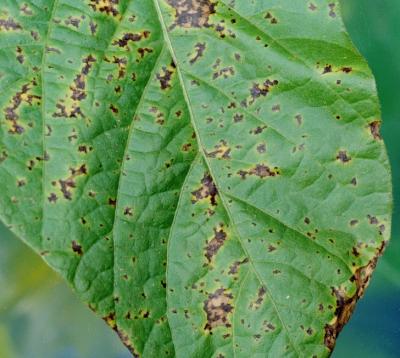

Soybean bacterial blight (Pseudomonas savastonoi pv. glycinea)
Blight lesions are most conspicuous on leaves but also occur on stems, petioles, and pods. Small, angular, translucent, water-soaked, yellow to light brown spots appear on leaves. The centres soon dry out, turn reddish brown to black, and are surrounded by a water-soaked margin bordered by a yellowish green halo. Young leaves are most susceptible. Infected young leaves are distorted, stunted, and chlorotic. The angular lesions enlarge in cool, rainy weather and merge to produce large, irregular dead areas. P. savastonoi pv. glycinea over seasons in surface crop residue and in seeds. Seeds can be infected through the pods during the growing season, or they may be invaded during harvesting. Primary infections on cotyledons often result in secondary lesions on seedlings. The bacterium is spread during windy rainstorms and during cultivation while the foliage is wet. It is seed-borne.
- Use certified disease-free seeds.
- Plant resistant varieties, if available.
- Practise proper field sanitation.
